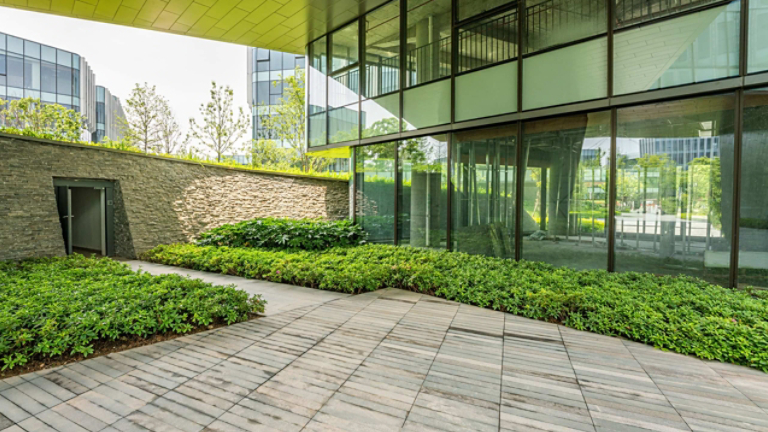Decarbonization. It means decreasing or eliminating greenhouse gas (GHG) emissions, and it may be the number-one challenge for new or replacement HVAC systems in 2023 and beyond. Approximately 15% of greenhouse gas emissions worldwide can be traced to cooling and heating systems1. The good news: By applying efficient, low carbon strategies for new or replacement HVAC comfort systems, we can help to reduce that impact—by a lot.
Here are four factors to consider in reducing the carbon impact of comfort.
1. Energy Efficiency
Energy efficiency means using less energy to produce the same (or better) results. In fact, improvements in modern chiller efficiency and chiller plant controls have been driving down energy use for decades. Best practices in engineering system design will unlock the full capability and advantages of the chiller and its system components. Whether you're working toward a net-zero ESG goal, seeking compliance with local regulations and building codes, or looking for ways to reduce operating expenses, improving energy efficiency can be part of the solution. A big part. Did you know that Trane offers different levels of chiller efficiency to meet business goals with options for free cooling and heat recovery? We can help drive down energy use even further with features such as magnetic-bearing compressors, variable speed fans, free cooling, and heat recovery.
2. Electrification
Electric heating may eliminate the direct carbon emissions that result when a building’s steam and boiler systems burn fossil fuels. Like electric vehicles, HVAC systems are transitioning to take advantage of grid electricity that is increasingly produced using cleaner renewable energy sources. There are many innovative electric heating methods hitting the market. For example, many of Trane’s chillers can provide electric heating, too. We call them “chiller-heaters” and they can deliver efficient and reliable comfort in virtually any building in any climate by applying heat recovery. Improvements in vapor compressors have led to new heat pumps, simultaneous heating and cooling multipipe units, too.
What’s more, we’re taking both energy efficiency and electrification one step further by making these systems easier than ever to design. With Trane Design Assist™ engineers can lay out reliable, high performance controls sequences as well as flow diagrams and points lists ensuring the system delivers on its decarbonization goals.
3. Refrigerant Management
Our industry is hyper-focused on reducing the ozone-depleting impact of refrigerants. optimized refrigerant choices are available, and preferences keep evolving based on current regulations and research. A trusted industry collaborator like Trane can help you understand the impact of low global warming potential (GWP) refrigerants in the chillers that use them. Make sure your service providers are following safe refrigerant handling and proper documentation protocols, too.
4. Renewable Energy
Full building decarbonization requires a clean-energy source, along with an energy storage system or battery to resolve the disconnect between renewable energy availability and heating and cooling demand. The solution can be a surprisingly simple “ice battery.” Thermal energy storage uses ice to collect and store renewable energy when it is available and plentiful, and then dispatch it when real-time supply is low. For example, we can store wind energy for times of calm. Or capture solar energy for nighttime or cloudy-day use. Thermal energy storage is a dependable, time-tested concept that’s being applied in some very creative ways to help decarbonize HVAC systems.
When it is done right, decarbonization can result in buildings that are more climate friendly, more comfortable, and more financially responsible. When you’re ready to start your decarbonization journey, Trane can help. Every customer’s journey is different, and we can help you formulate a strategy that meets your organizational goals.

